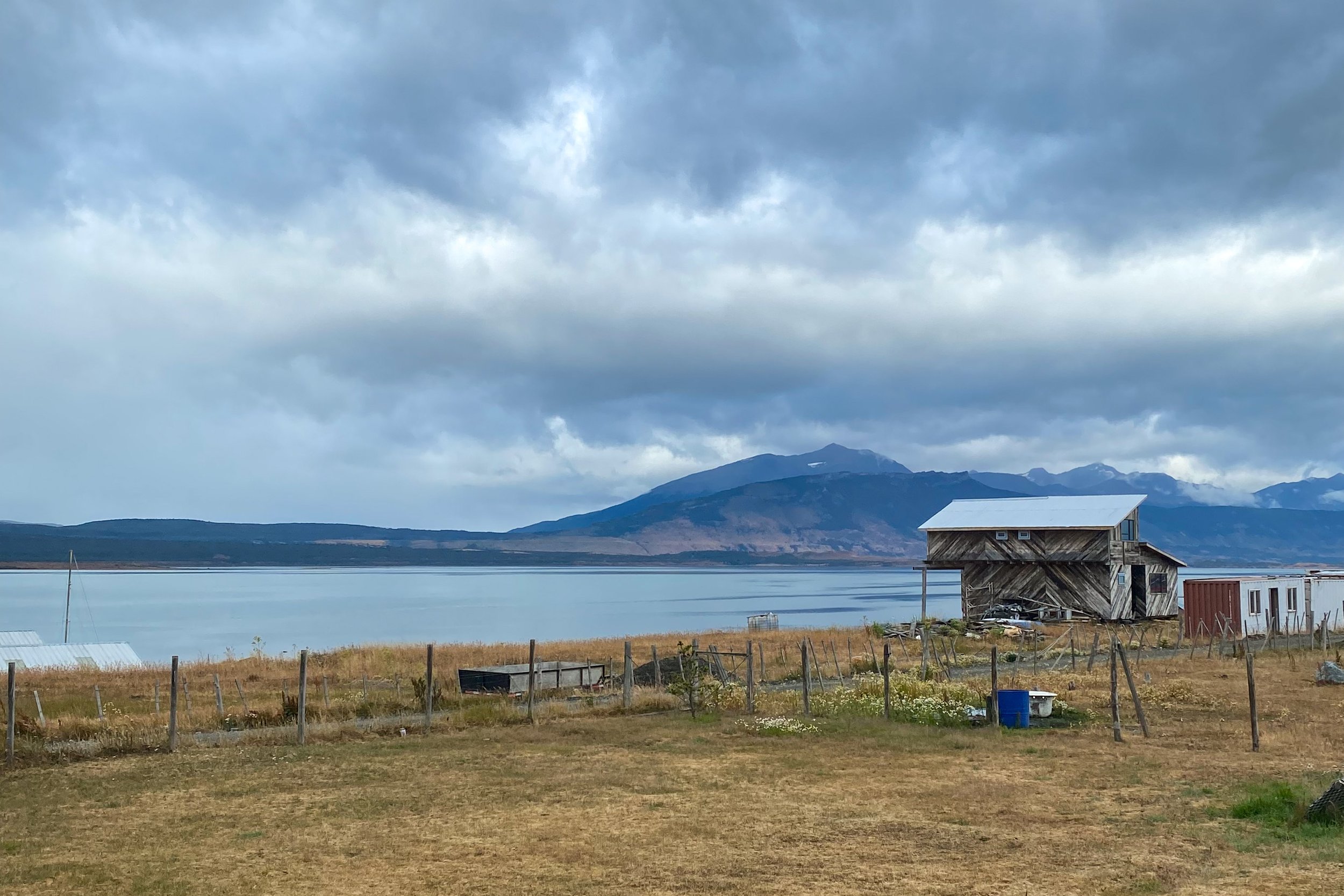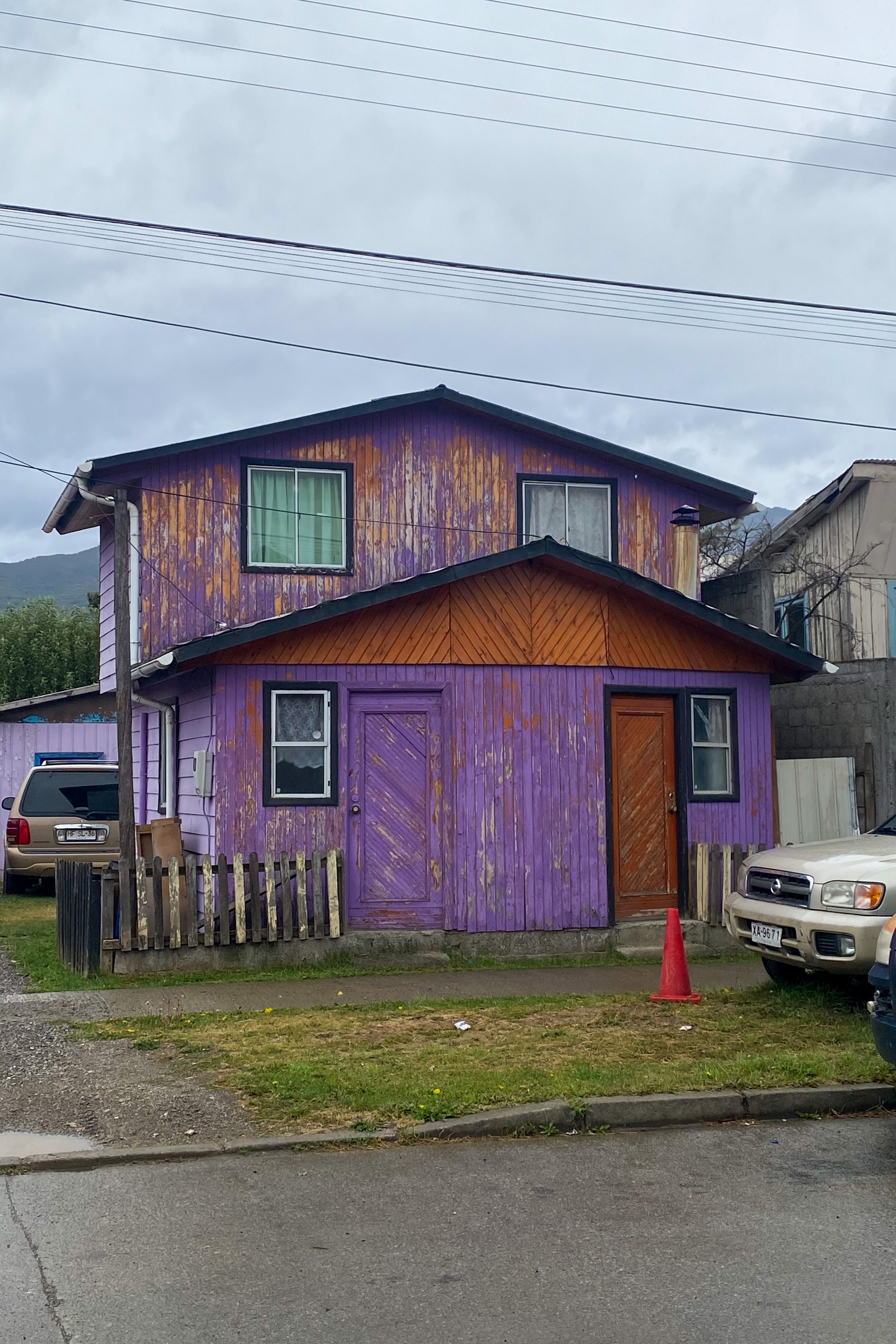Arquitectura Patagónica
From Ushuaia onwards I have been looking out for an improvement from the low base level quality of architecture that the town at the world sets as a measure. What I have found is the use of a consistently simple palette of materials used to create a simple domestic vernacular that is clearly identifiable as Patagonian.
Seen here is the police station in El Chaltén built in the 1940s is typically modest with a corrugated metal roof, metal vertical cladding with timber cladding features and Crittal windows.
The fact is that outside of the small towns strung along routes 7 and 40 there are very few houses and we could drive for hours without seeing any sign of human activity or development.
Shop alley in Coyhaique named after one of the regions explorers and not a slant at the local residents
Spec houses in El Calafate representing an efficient timber frame building the style of which can be seen in virtually every village and town in Patagonia.
Wild West frontier style in Puerto Varas with timber shingles that are prevalent in the northern part of the region.
Humble dwelling in Puerto Natales using anything that’s knocking around to fit into their building. Why does it matter when you have a view like that every morning?
Brightly coloured buildings are all the rage in Cochrane
Our Cabaña in Cochrane. Shiny piney!
Chaitén shop unit. Don’t worry, we will still use the windows.
Jesuit church in Puerto Varas. There are not many religious buildings and those that there are tend to be very simply built. (Apologies for the picture quality, we were late for dropping the car off at Puerto Montt airport)
Make shift cafe in Puerto Bertrand
Not sure what this house in Cochrane was salvaged from. I don’t think that there is a Patagonian space programme.
Modern hotel in El Chaltén.
Steakhouse El Chaltén. Simple and effective reflecting the generally low rise nature of all development in these small towns.
Our stylish Cabaña at Coyhaique
Something completely different in Barilioche Argentina with the 1940s Bavarian style buildings that form the civic square. Perhaps it was this that attracted Adolf Hitler and Eva Braun to escape here after WWII…














